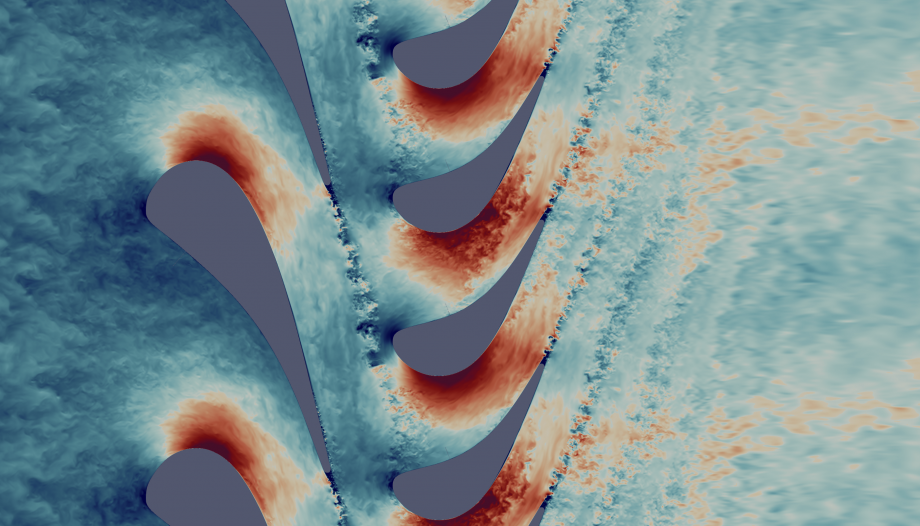The turbines and generators that power our planes and electrical grids are a marvel of precision engineering and refinement. For decades people have been building turbines to power their homes, vehicles and industries. Professor Richard Sandberg from the University of Melbourne is continuing that lineage, using the Gadi supercomputer to simulate in exquisite detail the airflows that drive these machines. The aim is to guide future designs that are more efficient and durable, thereby decreasing emissions and increasing lifespans and reliability.
The flows of air in extreme environments, such as in the 1,500 degrees, 50 bars of pressure, and thousands of rotor revolutions that take place every minute inside a gas turbine, are extremely complex. Measurements are practically impossible: the only way to see what is happening inside the machine is with Direct Numerical Simulations (DNS). These first-principle based simulations can capture the physics of the airflows model-free, and recreate the chaos, turbulence and eddies present inside a rapidly spinning turbine. With a resolution down to micrometres, DNS uses billions of grid points and millions of time steps to calculate the fluid flows as they evolve and interact.
Running on Gadi means that simulations can cover the full scale of flows inside the turbine at real-engine conditions, from the tiniest micrometre-sized interactions to the bigger centimetre-sized effects. Being able to simulate them all at the same time means that the interaction between small-scale turbulence and larger eddies becomes clear. The computing limitations that restrict the size of DNS are being pushed back by new technologies, opening up research possibilities that were previously inaccessible.
One of those new technologies is Graphics Processing Units (GPUs), a growing technology in supercomputing that is perfectly suited to running simulations such as these requiring vast numbers of grid points. Gadi’s new V100 GPUs offer extreme performance, allowing Professor Sandberg to split his grid into dozens of manageable 20-million-point chunks. This leverages the rapid communication that NCI has built between the GPUs, as well as their own performance characteristics.
Professor Sandberg says, “It’s exciting to be able to see the impact of what we do. If we can find something that makes planes and power generation more efficient, it’s an important advancement that benefits everybody. And we shouldn’t underestimate the skills development and knowledge that my colleagues and students have built up. Supporting and watching them grow is also very rewarding.”
